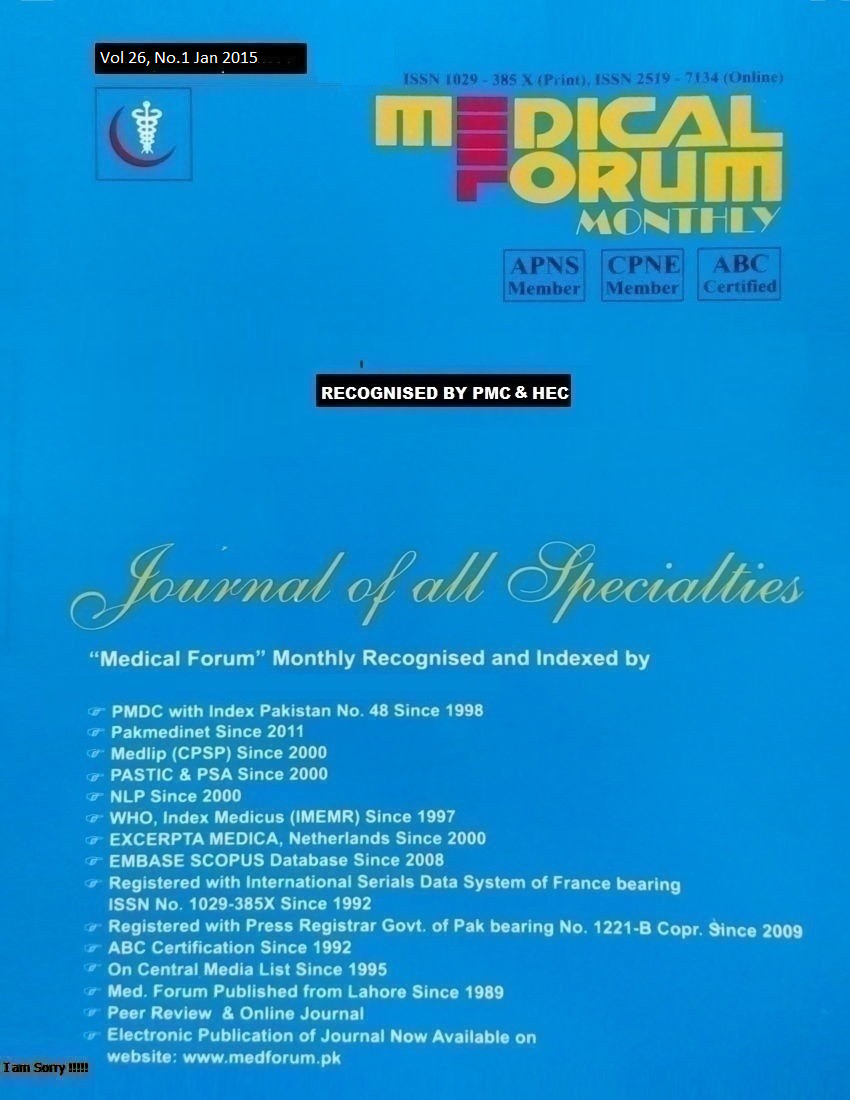
9. Salivary Gland Tumours: A Tertiary Care Hospital Experience
1. Qaisar Khan 2. Fazal-I-Wahid 3. Muhammad Saleem 4. Nadar Khan 5. Muhammad Riaz Khan 6. Bakht Zada 7. Iftikhar Ahmad Khan
1. Senior Registrar of ENT, PGMI, Hayatabad Medical Complex, Peshawar 2. Senior Registrar of ENT, PGMI,
Lady Reading Hospital, Peshawar 3. Assoc. Prof. of ENT, PIMC&H, Peshawar 4. Junior Registrar of ENT, PGMI,
Lady Reading Hospital, Peshawar 5. District Specialist of ENT, PGMI, Hayatabad Medical Complex, Peshawar
6. Asstt. Prof. of ENT, PGMI, Lady Reading Hospital, Peshawar 7. Prof. of ENT, PGMI, LRH, Peshawar
ABSTRACT
Objective: To study demographic, clinical and histopathological features of salivary gland tumours in a tertiary care hospital.
Study Design: Prospective cross sectional study.
Place and Duration of Study: This study was carried out in the Department of ENT, Head & Neck surgery, Postgraduate Medical Institute, Lady Reading Hospital Peshawar from June 2010 to May 2014.
Materials and Methods: This prospective cross sectional study of 4 years was carried out in the Department of ENT, Head & Neck surgery, Postgraduate Medical Institute, Lady Reading Hospital Peshawar. All the patients qualifying inclusion criteria were evaluated in terms of detailed history, thorough examination and relevant investigation. After performing required surgery specimen was examined for histopathology.
Results: In this study 123 patients were included with mean±SD age of 40±5.1 years (age range 7–76 years). Males were 81 and females were 42 with male: female ratio of 1.9:1. Most of the patients presented in 4th decade (28.45%, 35). Lump was the commonest clinical feature lasting for 1-5 years (66.66%, 82). Among the tumours 77.23% were benign while 22.76% were malignant. Benign tumours were commonly noticed in parotid gland (53.65%). Pleomorphic adenoma was the commonest benign tumour (65.04%, n-80), affecting parotid gland in 52.03%. Mucoepidermoid carcinoma is the commonest malignant tumour (12.19%) predominantly found in minor salivary gland of palate (6.50%).
Conclusion: Salivary gland tumours predominantly affecting middle aged male population. Benign tumours are the commonly occurring salivary gland tumours .Pleomorphic adenoma is commonly occurring benign tumour affecting predominantly parotid gland while mucoepidermoid carcinoma is the commonest malignant tumour of salivary glands.
Key Words: Benign, Malignant, Tumours, Major and minor salivary gland, Histopathology
Citation of article: Khan Q, Wahid F, Saleem M, Khan N, Khan MR, Zada B, et al. Salivary Gland Tumours:
A Tertiary Care Hospital Experience. Med Forum 2015;26(1):33-37.
